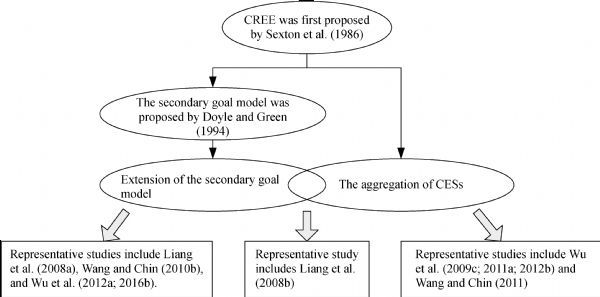The traditional CREE method uses the arithmetic average method to aggregate all CESs. However, the efficiency results obtained using the arithmetic average method lose the correlation between weights and CESs and are not Pareto optimal. To overcome the shortcomings, scholars have recently proposed a series of CES aggregation methods to replace the arithmetic average method. For instance,
Wu et al. (2009c) regarded each DMU as a player in a cooperative game, defined the characteristic function values of the alliance and various sub-allies, and combined cooperative game theory with the CREE method. Then, the aggregation weights of each DMU were calculated using the Shapley values of the players in the cooperative game. Using the concept of information entropy,
Wu et al. (2011a;
2012b) transformed the CES matrix into an entropy matrix and proposed an entropy decision model, which used the obtained weights to aggregate all CESs.
Song et al. (2017) used the benevolent and aggressive models to calculate two sets of CES matrices for all DMUs, then the entropy decision model of
Wu et al. (2011a) was applied to aggregate all CESs.
Song and Liu (2018) extended this model with a variance coefficient method.
Zerafat Angiz et al. (2013) proposed a two-step sorting-based aggregation method. The CES matrix was first transformed into a ranking order matrix, and a first-order model was then used to obtain aggregation weights.
Wang and Wang (2013) proposed a least-square deviation approach to measure the importance index of each CES and calculate the aggregation weights of all CESs in accordance with their importance indices. To rank efficient DMUs,
Hong and Jeong (2017) proposed two heuristic approaches based on the CREE method. Unlike other CREE methods, these approaches do not use any linear programming model but can completely rank all DMUs.




